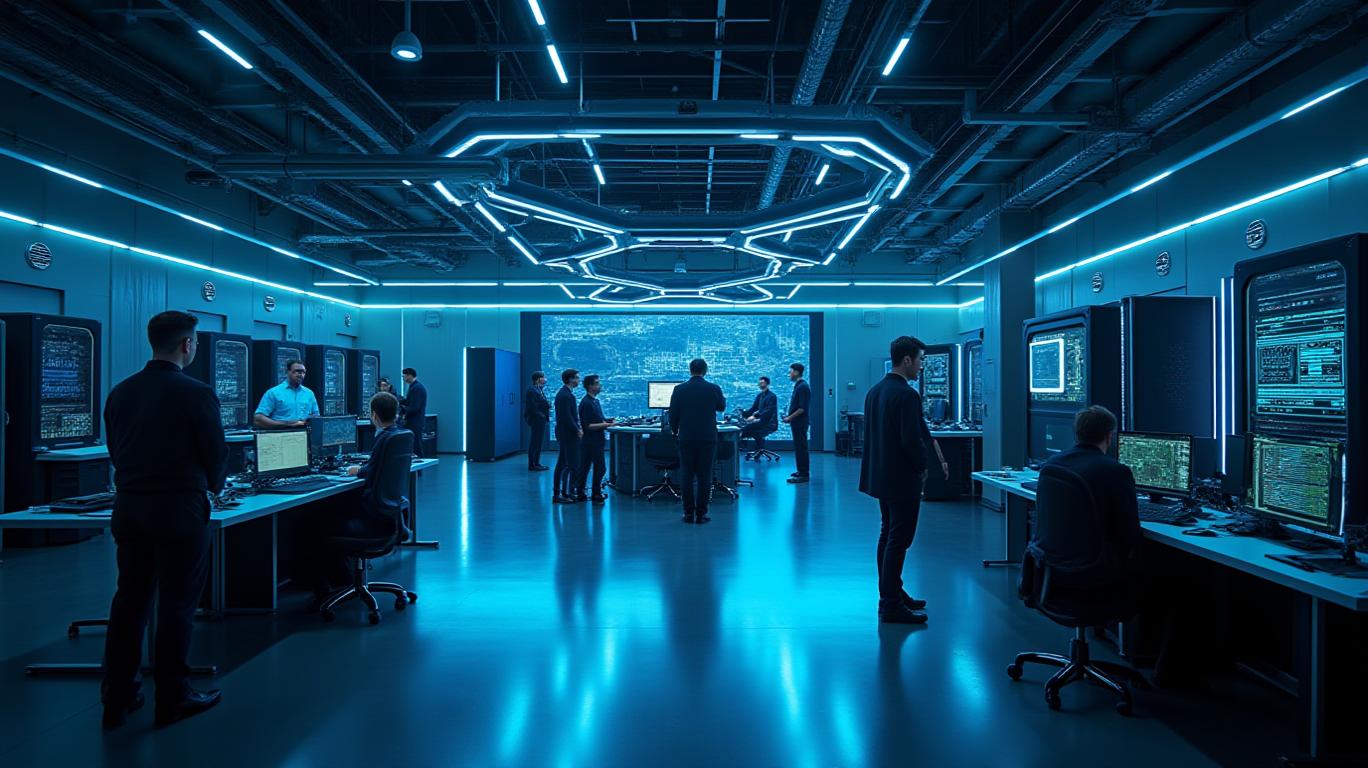NVIDIA's Blackwell Architecture and the AI Infrastructure Gold Rush: Why Now is the Time to Invest
The AI revolution is not just about algorithms—it's about the infrastructure that fuels them.
(NASDAQ: NVDA) has positioned itself as the backbone of this transformation, and its recent financial results and strategic moves underscore its dominance in the AI infrastructure market. With its groundbreaking Blackwell architecture and a ecosystem of partnerships, NVIDIA is set to capitalize on a $32.5 billion revenue quarter and a data center business growing at a blistering 154% year-over-year. Here's why investors should act now.The Blackwell Architecture: Powering the Next Generation of AI
At the heart of NVIDIA's momentum is its Blackwell architecture, a platform engineered to handle trillion-parameter-scale generative AI models. This is no incremental upgrade—it's a leap forward in compute density and efficiency. The Blackwell-powered DGX SuperPOD, for instance, allows customers to build “AI factories” capable of training models that would previously have been impossible.

The architecture's scalability is staggering. A single Blackwell-based system, the GB 200 NVL72, can link 72 GPUs into a unified supercomputer, delivering up to 30 times faster inference for large language models. This performance leap is critical as enterprises and governments race to deploy AI at scale.
Data Center Revenue Surges: A $26.3B Runway to $32.5B
NVIDIA's first-quarter fiscal 2025 Data Center revenue hit $26.3 billion, a 154% year-over-year surge, driven by demand for its Hopper and Blackwell architectures. This segment now accounts for 87% of total revenue, cementing NVIDIA's status as the undisputed leader in AI infrastructure.
The second-quarter guidance of $32.5 billion—a 23% sequential jump—reflects the inflection point in AI adoption. Even after accounting for $8 billion in revenue lost to U.S. export restrictions on China, NVIDIA's growth trajectory remains intact.
Strategic Partnerships: Building an Unassailable Moat
NVIDIA's success isn't just about hardware—it's about building a full-stack AI ecosystem that competitors cannot replicate. Key partnerships include:
- cuLitho with TSMC and Synopsys: Accelerating semiconductor manufacturing, reducing chip design times by 50%.
- Sovereign AI initiatives: Japan's ABCI 3.0 supercomputer integrates Blackwell GPUs, while nine new supercomputers globally now use Grace Hopper Superchips.
- Enterprise software adoption: Over 150 companies, including AT&T and Uber, are deploying NVIDIA's NIM microservices to slash AI development costs by up to 70%.
These partnerships create a flywheel effect: more compute demand fuels software adoption, which in turn drives hardware sales.
Why Now is the Inflection Point
The AI infrastructure market is entering a hypergrowth phase, and NVIDIA is perfectly positioned to own it. Consider:
1. Supply Chain Dominance: Partners like GIGABYTE and QCT are building over 100 Blackwell-based systems, ensuring rapid deployment.
2. Software Leverage: NVIDIA's AI Foundry and NIM services now generate a $2 billion annual run rate, with enterprises like Accenture building custom models on its platform.
3. Margin Resilience: Despite short-term headwinds, NVIDIA's non-GAAP gross margins are holding steady at 75%, with full-year guidance in the mid-70% range—a testament to its pricing power.
The $50 billion share repurchase authorization further signals confidence: NVIDIA is rewarding shareholders while reinvesting in its AI future.
Risks? Yes—but the Upside is Massive
Export restrictions and geopolitical tensions are real concerns, but NVIDIA is mitigating risks through diversification. Sovereign AI projects in Japan, Taiwan, and beyond are offsetting China-related headwinds. Meanwhile, Blackwell's production ramp—beginning in Q4—will unleash a wave of revenue.
Conclusion: NVIDIA is the AI Infrastructure Play for the Next Decade
With its Blackwell architecture unlocking trillion-parameter AI, a data center business growing faster than the stock market's wildest expectations, and a fortress-like ecosystem, NVIDIA isn't just a tech stock—it's a generational investment.
The numbers don't lie: $32.5B in Q2 revenue, 154% YoY growth, and a roadmap that extends into 2026 and beyond. For investors, the question isn't whether to buy NVIDIA—it's when. Historically, buying NVIDIA on the day of quarterly earnings announcements and holding for 20 trading days from 2020 to 2025 resulted in an average return of 12.77%, though with significant volatility, including a maximum drawdown of -38.02%. This underscores the potential rewards but also highlights the need for risk management.
The AI revolution is here, and NVIDIA is its engine. Don't miss the ride.
Investing involves risk, including loss of principal. Past performance does not guarantee future results.

Comments
No comments yet